I have found below code buggy as it degrades the performance of extjs3 grid, i am looking for possibilities of optimization at query or code level, as per my analysis, if we extract out the query there are two nested inner queries which are responding slow, in addition, the code inside while loop trying to find the unique id, can't we have distinct in query, or joins rather than inner queries.
Please suggest me the best practice to follow in order to achieve optimization.
public boolean isSCACreditOverviewGridVisible(String sessionId) {
Connection conn = null;
ResultSet rs = null;
PreparedStatement ps = null;
boolean result = false;
try {
CommonUtility commUtil = new CommonUtility();
List<String> hmIds = new ArrayList<String>();
Map<String, String> tmStockMap = new TreeMap<String, String>();
Set<String> setRecentCertificate = new HashSet<String>();
String managerAccountId = sessionInfo.getMembershipAccount();
String stockQuery = " select memberId , RootCertficateId from stockposition sp where sp.stocktype = 'TR' and sp.memberId "
+ " IN ( select hm2.accountId from "
DATALINK
+ ".holdingmembers hm2 "
+ " where hm2.holdingId = ( select holdingId from "
DATALINK
+ ".holdingmembers hm1 where hm1.accountId = ? )) "
+ " order by sp.createdDate desc ";
conn = getChildDBConnection();
if (null != conn) {
ps = conn.prepareStatement(stockQuery);
ps.setString(1, managerAccountId);
rs = ps.executeQuery();
if (null != rs) {
while (rs.next()) {
String memberId = rs.getString("memberId");
String rootCertficateId = rs
.getString("RootCertficateId");
if (tmStockMap.containsKey(rootCertficateId)) {
continue;
}
hmIds.add(memberId);
tmStockMap.put(rootCertficateId, memberId);
}
}
rs.close();
ps.close();
if (null != hmIds && !hmIds.isEmpty()) {
String inIds = commUtil.getInStateParam(hmIds);
String mostRecentLicense = "Select RootCertificateId , memberaccountid from "
+ OctopusSchema.octopusSchema
+ ".certificate c where c.memberaccountid IN ("
+ inIds
+ ") and c.isrootcertificate=0 and c.certificationstatusid > 1 order by c.modifieddate desc";
ps = conn.prepareStatement(mostRecentLicense);
rs = ps.executeQuery();
if (null != rs) {
while (rs.next()) {
String rootCertficateId = rs
.getString("RootCertificateId");
String memberaccountid = rs
.getString("memberaccountid");
if (setRecentCertificate.contains(memberaccountid)) {
continue;
}
setRecentCertificate.add(memberaccountid);
if (tmStockMap.containsKey(rootCertficateId)) {
result = true;
break;
}
}
}
rs.close();
ps.close();
} else {
result = false;
}
}
} catch (Exception e) {
LOGGER.error(e);
} finally {
closeDBReferences(conn, ps, null, rs);
}
return result;
}
QUERY:
select RootCertficateId,memberId from stockposition sp where sp.stocktype = 'TR' and sp.memberId
IN ( select hm2.accountId from
DATALINK.holdingmembers hm2
where hm2.holdingId = ( select holdingId from
DATALINK.holdingmembers hm1 where hm1.accountId = '4937' ))
order by sp.createdDate DESC;

